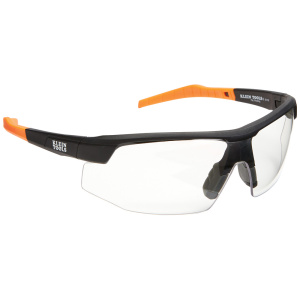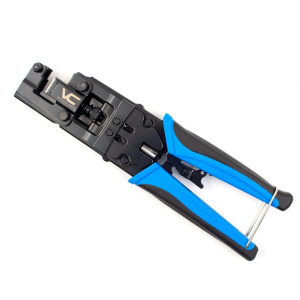When it comes to wiring connections, quick-splice blocks offer a fast, reliable and efficient solution. In this comprehensive guide, we explore the nitty-gritty of installing quick-splice blocks for fast wiring connections.
Introduction: Understanding the Basics
Quick-splice blocks, also known as quick-connect blocks, provide a simplified method of creating secure connections within a wiring system. These specialized devices have revolutionized the field of electrical wiring, offering a time-saving and hassle-free alternative to traditional methods.
What are Quick-Splice Blocks?
In a nutshell, quick-splice blocks are unique devices designed to provide a speedy solution for joining wires. They eliminate the need for manual stripping, twisting and soldering, which is often a time-consuming and tedious process. Quick-splice blocks allow for the swift and secure connection of wires, ensuring a high-quality, safe, and reliable connection.
The Necessity of Quick-Splice Blocks
In today’s fast-paced world, time is of the essence. Traditional wiring methods, while effective, are often time-consuming and require a certain level of expertise. Quick-splice blocks, on the other hand, simplify the process and speed up installations.
Time Efficiency with Quick-Splice Blocks
Who wouldn’t prefer a solution that saves time? Quick-splice blocks are designed to do just that. They allow for the quick connection of wires, thereby saving valuable time and effort. Say goodbye to the painstaking task of manually stripping and twisting wires, and hello to swift and secure connections.
How Do I Install Quick-Splice Blocks for Fast Wiring Connections?
Materials Required
Before we get down to the nitty-gritty of installing quick-splice blocks, you’ll need to gather a few essential materials. These include:
- Quick-splice blocks
- Electrical wires
- Wire cutters
- Wire strippers (optional)
- Multimeter (optional)
Step-by-Step Installation Guide
Once you have all the necessary materials on hand, follow the steps outlined below:
- Cut the wire to the required length using a wire cutter.
- Insert the wires into the quick-splice block. Make sure that the wires are fully inserted into the block.
- Press down on the quick-splice block using a pair of pliers until it clicks into place. This ensures a secure connection.
- Repeat the process for all the wires you wish to connect.
- If you want to verify the connection, use a multimeter to check for continuity.
The Advantages of Using Quick-Splice Blocks
Quick-splice blocks come with a host of benefits that have contributed to their growing popularity in the field of electrical wiring.
Ease of Installation
One of the main advantages of quick-splice blocks is the ease of installation. Unlike traditional wiring methods that require technical knowledge and expertise, installing quick-splice blocks is a breeze. All you need to do is insert the wires into the block and press down until it clicks into place. It’s as simple as pie!
Reliable Connections
Quick-splice blocks offer reliable and secure connections. The design of these devices ensures that the wires are securely held in place, reducing the risk of loose connections or disconnections.
Reduced Risk of Electrical Shock
When working with electricity, safety is paramount. Quick-splice blocks reduce the risk of electrical shock by securely insulating the wire connections.
The Limitations of Quick-Splice Blocks
Despite their numerous benefits, quick-splice blocks are not without their limitations.
Incompatibility with Certain Wire Types
Quick-splice blocks are compatible with a wide range of wire types. However, they may not work well with certain types of wires, such as stranded wires. Therefore, it’s important to check the compatibility of your wires before proceeding with the installation.
Difficulty in Disassembling
Once installed, quick-splice blocks can be quite difficult to disassemble. This can be a disadvantage if you need to make changes to your wiring system.
Frequently Asked Questions (FAQs)
Q1: How Do I Install Quick-Splice Blocks for Fast Wiring Connections?
A1: Installation of quick-splice blocks is straightforward. Insert the wires into the quick-splice block, press down until it clicks into place, ensuring a secure connection.
Q2: Can I use quick-splice blocks with any type of wire?
A2: While quick-splice blocks are compatible with many wire types, there might be issues with some types, like stranded wires. Always check the manufacturer’s guidelines before use.
Q3: How reliable are the connections made with quick-splice blocks?
A3: Quick-splice blocks offer reliable and secure connections. The design ensures that the wires are securely held in place, reducing the risk of loose or disconnected wires.
Q4: Can I disassemble a quick-splice block once it’s installed?
A4: Disassembling a quick-splice block can be difficult once it’s installed. If changes to your wiring system are likely, consider alternative methods.
Q5: Are quick-splice blocks safe to use?
A5: Yes, quick-splice blocks are safe. They reduce the risk of electrical shock by insulating the wire connections securely.
Q6: Do quick-splice blocks save time in wiring installations?
A6: Absolutely! Quick-splice blocks offer a time-efficient solution for joining wires, eliminating the need for manual stripping, twisting, and soldering.
Conclusion
Quick-splice blocks are a game-changer in the field of electrical wiring, offering a swift, reliable, and efficient solution for connecting wires. With their ease of installation, reliable connections, and safety benefits, they’re an excellent choice for those looking to save time and effort in their wiring tasks. However, remember to consider their limitations and ensure compatibility with your specific wiring requirements. With the right knowledge, quick-splice blocks can be a great addition to your wiring toolkit.












